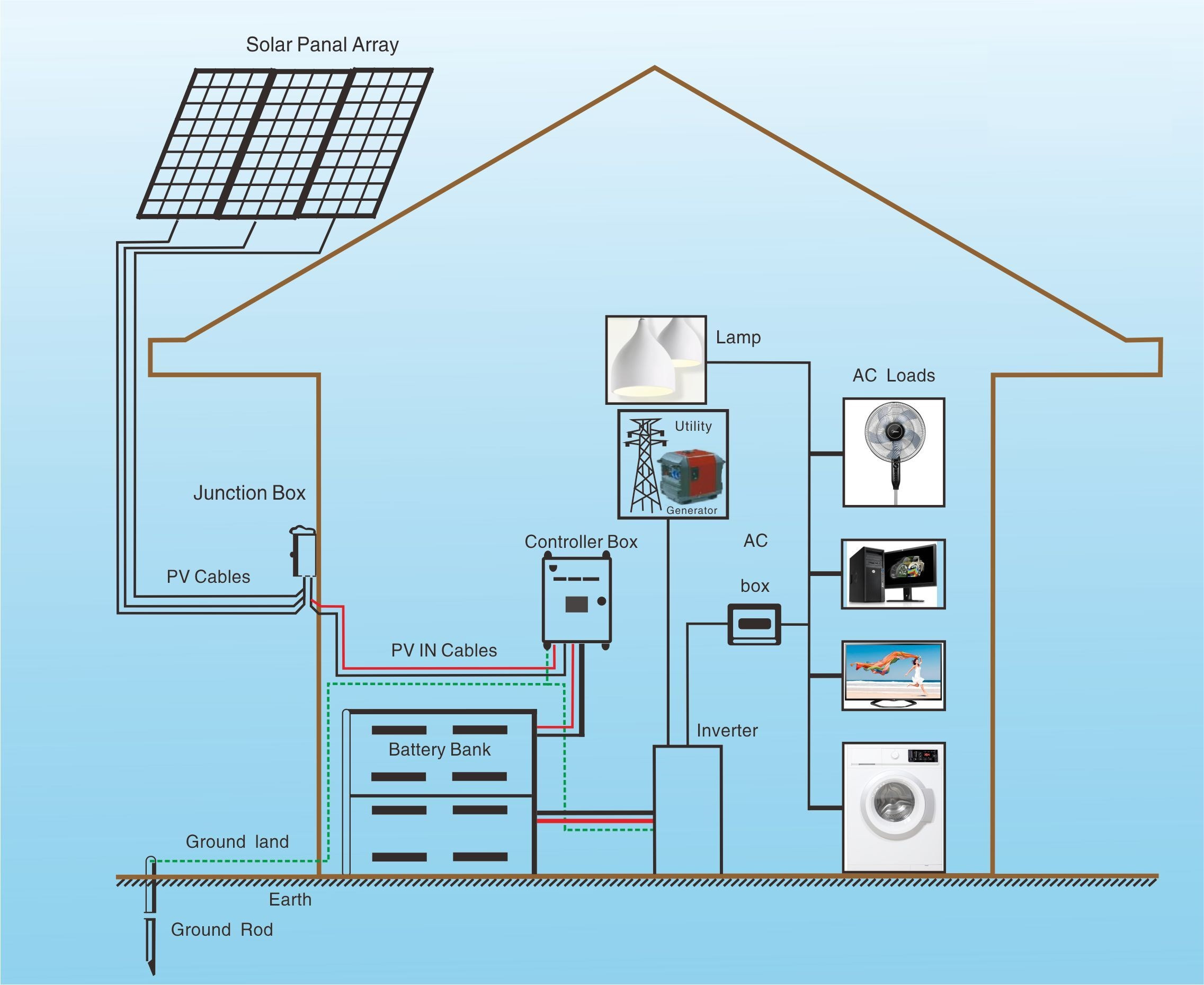“How to wire solar panels to a house electrical system?”
Understanding the Basics of Solar Panel Systems
Before we dive into the wiring process, it’s essential to understand the basic components of a solar panel system. A typical solar panel system consists of:
- Solar Panels: These are the photovoltaic (PV) panels that convert sunlight into electrical energy.
- Mounting System: This includes the racks, clamps, and other hardware that secure the solar panels to your roof or ground-mounted array.
- Inverter: The inverter converts the DC (direct current) power generated by the solar panels into AC (alternating current) power, which is usable in your home.
- Charge Controller: This component regulates the flow of energy from the solar panels to the battery bank (if you have one) or directly to the inverter.
- Battery Bank: This is an optional component that stores excess energy generated by the solar panels for later use.
- Electrical Panel: This is the main electrical panel in your home, where the solar panel system is connected to the grid.

Assessing Your Electrical Panel
Before wiring your solar panels to your house electrical system, it’s crucial to assess your electrical panel to ensure it can handle the additional energy generated by the solar panels. Consider the following factors:
- Panel Rating: Check the rating of your electrical panel to ensure it can handle the increased load. Most electrical panels have a rating of 100-200 amps.
- Available Space: Verify that there’s enough space in your electrical panel to accommodate the solar panel system’s electrical connections.
- Compatibility: Ensure that your electrical panel is compatible with the solar panel system’s voltage and current requirements.

Wiring Solar Panels to Your House Electrical System
Now that you’ve assessed your electrical panel, it’s time to start wiring your solar panels to your house electrical system. Follow these steps:
Step 1: Connect the Solar Panels to the Inverter

- Connect the positive (+) and negative (-) terminals of each solar panel to the corresponding terminals on the inverter.
- Ensure the connections are secure and meet the manufacturer’s specifications.
- Use the recommended wire size and type, typically 10-14 AWG (American Wire Gauge) for residential installations.
Step 2: Connect the Inverter to the Electrical Panel
- Connect the inverter’s output cables to the electrical panel’s busbars or circuit breakers.
- Ensure the connections are secure and meet the manufacturer’s specifications.
- Use the recommended wire size and type, typically 10-14 AWG for residential installations.
Step 3: Install a Dedicate Circuit for the Solar Panel System
- Install a dedicated circuit for the solar panel system, separate from the main electrical panel.
- Use a 20-30 amp circuit breaker, depending on the size of your solar panel system.
- Connect the dedicated circuit to the electrical panel’s busbars or circuit breakers.
Step 4: Ground the Solar Panel System
- Connect the solar panel system’s ground wire to the electrical panel’s grounding system.
- Ensure the grounding system is secure and meets the manufacturer’s specifications.
- Use the recommended wire size and type, typically 10-14 AWG for residential installations.
Step 5: Install Monitoring and Control Equipment (Optional)
- Install monitoring and control equipment, such as a monitoring system or a remote shut-off device, if required by your local electrical codes or utility company.
- Connect the monitoring and control equipment to the solar panel system and electrical panel.
Safety Considerations
When wiring solar panels to your house electrical system, safety should always be your top priority. Keep in mind:
- Electrical Shock: Ensure all electrical connections are secure and meet the manufacturer’s specifications to prevent electrical shock.
- Fire Hazard: Keep all electrical components away from flammable materials and ensure proper ventilation.
- Overload: Ensure the electrical panel and solar panel system are designed to handle the increased load to prevent overload and potential fires.
Permits and Inspections
Before completing the installation, ensure you’ve obtained the necessary permits and inspections from your local authorities. This may include:
- Electrical Permit: Obtain an electrical permit from your local building department or electrical inspector.
- Inspection: Schedule an inspection with your local electrical inspector to ensure the installation meets local electrical codes and regulations.
- Utility Company Approval: Obtain approval from your utility company, if required, to connect the solar panel system to the grid.
Conclusion
Wiring solar panels to your house electrical system requires careful planning, attention to detail, and a thorough understanding of electrical systems. By following the steps outlined in this article and taking necessary safety precautions, you can ensure a safe and efficient installation. Remember to always consult local electrical codes, regulations, and manufacturer’s specifications to ensure compliance and optimum performance. With a proper installation, you’ll be able to enjoy the benefits of renewable energy and reduce your carbon footprint for years to come.
Additional Resources
For further information and guidance on wiring solar panels to your house electrical system, consult the following resources:
- National Electric Code (NEC): The NEC provides guidelines for electrical installations, including solar panel systems.
- Underwriters Laboratories (UL): UL provides certification and testing for electrical components, including solar panel systems.
- International Association of Electrical Inspectors (IAEI): IAEI provides training and resources for electrical inspectors and installers.
- Solar Energy Industries Association (SEIA): SEIA provides industry guidelines and best practices for solar panel installations.
By following these guidelines and resources, you’ll be well on your way to a successful and safe solar panel installation.





